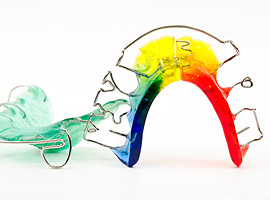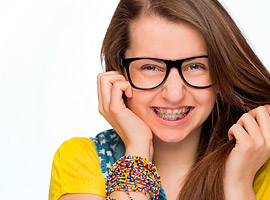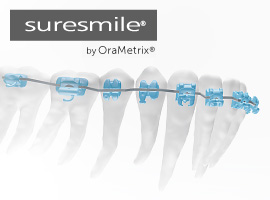What is orthodontics?
Orthodontics is a specialised branch of dentistry.
It includes the diagnosis, prevention, and treatment of dental and jaw malalignments. Orthodontic treatments should always be carried out by a specialist because only a trained orthodontist has the skills and knowledge necessary to correct malalignments of the teeth and jaws.
Orthodontists are specialised dentists. Their specialist title is conferred by the Swiss Dental Association (SSO) on behalf of the Federal Office of Public Health (BAG). Their training and final examinations are regulated by the Swiss Orthodontic Society (SGK).
There are various types of appliances used in orthodontic therapy:
- Removable Appliances (activators, bionators, Fränkel’s function regulator, and more)
- Fixed Labial Braces, visible from the outside (multiband appliances)
- Fixed Lingual Braces, also known as lingual technique. (The braces are bonded to the inside of the teeth and are thus not visible from the outside)
- Therapy with Transparent Aligners or Splints utilises removable appliances and is nearly invisible (Invisalign)
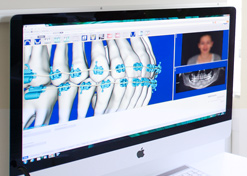
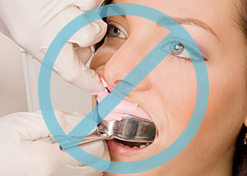
Diagnostics and Treatment Planning
Impressions with conventional impression material are usually no longer necessary
In our practice, we use digital X-rays and digital scanning for diagnostics and treatment planning. This gives us unique advantages in diagnostics and digital treatment planning.
Why is orthodontics necessary?
Orthodontics improves the alignment of the teeth and jaws.
Many patients who seek out an orthodontist do so primarily for aesthetic reasons. The perception of having an unfavourable appearance is associated with fears about social disadvantage and psychological problems. This is true for parents who bring their children to the orthodontist as well as adult patients. Impaired functionality often plays a lesser role in comparison. Functional problems tend to go unnoticed because malalignments develop gradually and people get used to the situation. One exception is when an anomaly leads to massive functional impairment and pain.
However, orthodontics is usually optional. We don't generally have "medical emergency" cases, which is an advantage because that means our patients can discontinue treatment at any time, as soon as they are satisfied with the results. Orthodontics is also a prophylactic measure. Most often, we don’t start treatment because the patient is unhappy now. Instead, we do it to avoid problems in the future.
Malocclusion
The upper and lower jaws should fit together functionally and harmoniously. Malocclusions are often recognisable in profile, without even looking at the teeth directly, because the profile mirrors the dental alignment.
Alignment is categorised in three angle classes:
- Harmonious profile: Class I
- Lower jaw too far back: Class II
- Lower jaw too far forward: Class III
Examples of Common Malocclusions
Dental Class II
The teeth of the lower jaw are too far back and/or the teeth of the upper jaw are too far forward. This is often visible as an enlarged gap between the upper and lower front teeth.
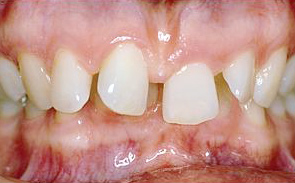
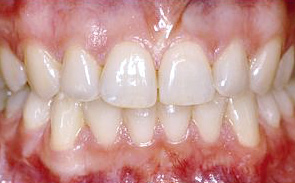
Dental Class III
The teeth of the lower jaw are too far forward and/or the teeth of the upper jaw are too far back.
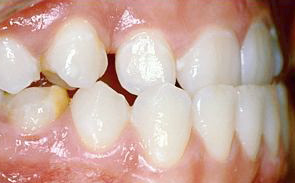
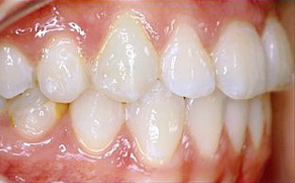
Frontal Crossbite
The teeth of the upper jaw are normally further outwards than those of the lower jaw.
In this example of frontal crossbite, the upper lateral incisor is situated behind the lower canine.
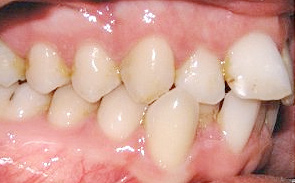
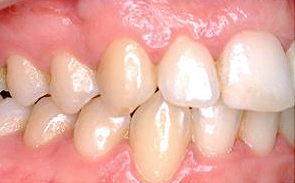
Frontal Open Bite
The upper teeth should overlap the lower teeth by approx. 2 mm when the mouth is closed.
In an open bite situation, the front teeth do not come together.
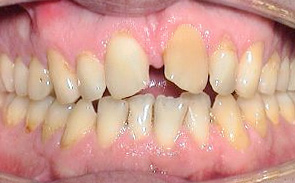
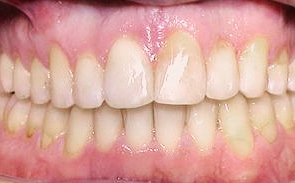
There are a wide variety of treatments for the aforementioned teeth and jaw malalignments. The individual patient’s therapy largely depends on the degree of variation from the norm.
Please make an appointment with us to discuss which course of treatment best fits your situation!








